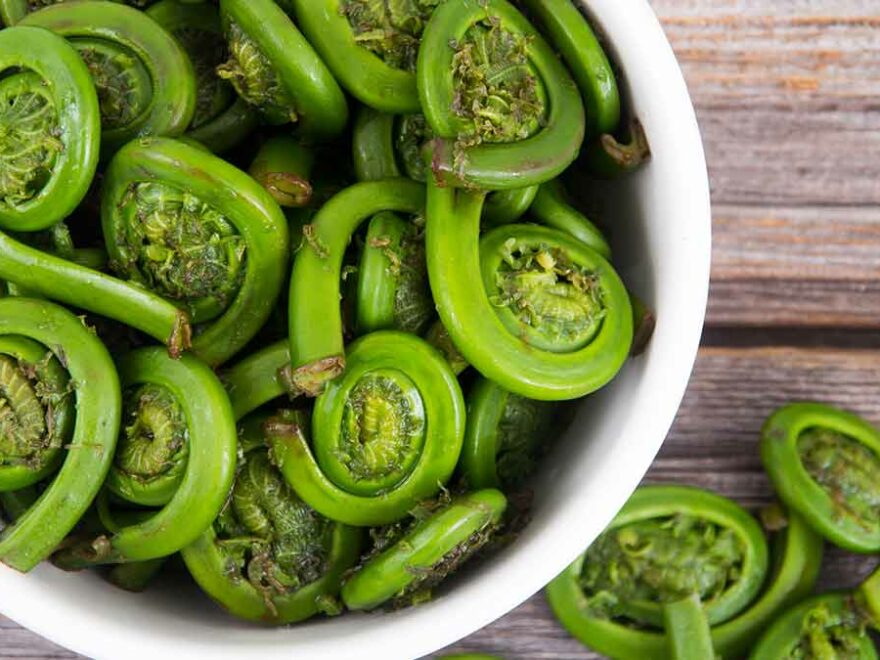Taking a walk through the produce department of your local supermarket might leave you feeling like you’ve seen every type of vegetable under the sun. The dizzying array of leafy greens and root vegetables, carefully perched alongside potatoes of every shape and size!
It may be tough to believe, but there are actually a ton of other vegetable varieties out there aside from the splendor you’re used to seeing in your market, so we’re counting down the 20 most unusual vegetables.
It may be your first time hearing about a few–we’re looking at you salsify! Or, as in the case of ramps, maybe you hear the hubbub about them every spring but still aren’t exactly sure, what is a ramp anyway? However deep your vegetable knowledge goes, you’re sure to learn something new about a weird vegetable or two!
1. Black Carrots
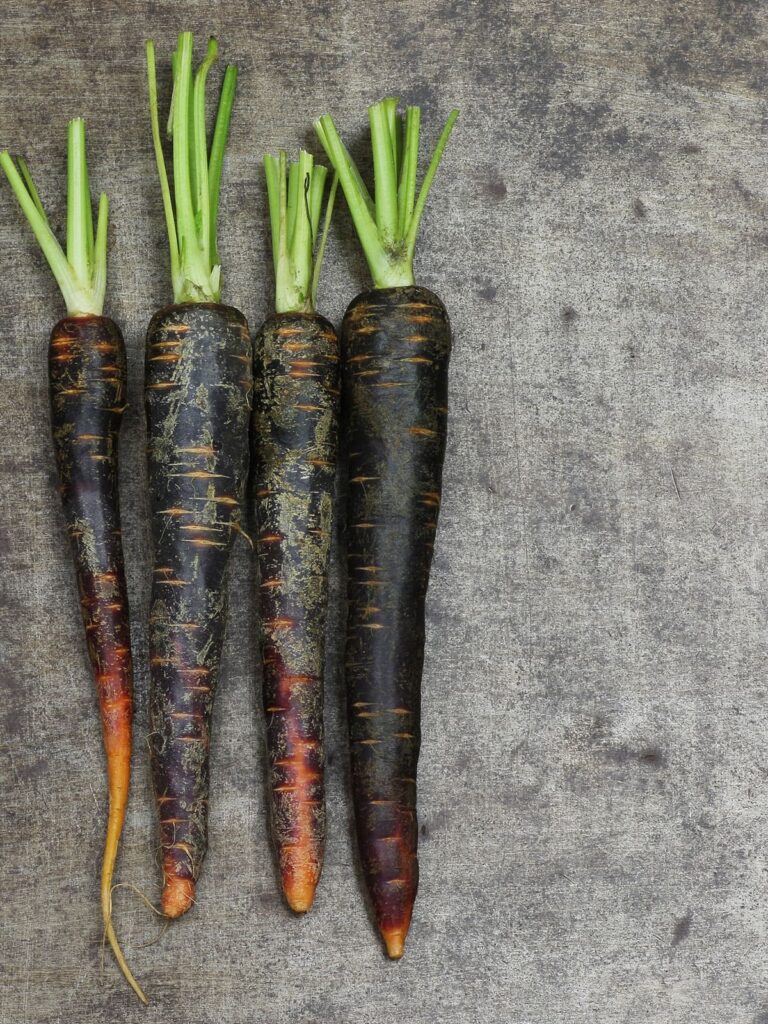
These unique looking carrots are striking with their midnight-colored peel. They may look pitch black at first glance, but once you slice into them, you’ll find a bright purple interior! Black/purple carrots owe their special coloring to an increased amount of a pigmenting compound called anthocyanin, while the more typical orange carrots have higher levels of a different compound–beta carotene.
In addition to black and orange, carrots come in a rainbow of other colors. There are also red carrots, yellow carrots, and even white carrots, which are sometimes confused with the parsnips, a similar looking yet entirely different root vegetable.
2. Cassava
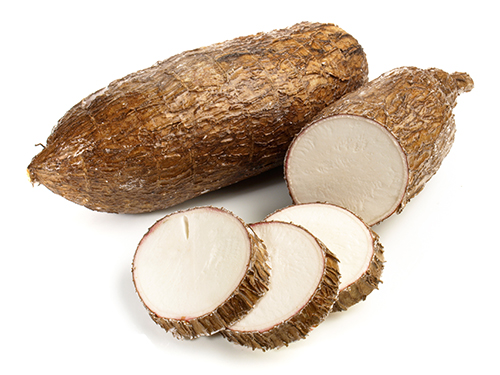
Cassava, also known as yuca and manioc, is the edible tuber of a certain shrub-like plant, and is not to be confused with yucca which is an entirely different plant altogether. The cassava plant thrives in dry weather, making it an important food source in many regions around the world, especially hot, dry regions of South America and Africa where many other crops struggle to get adequate water.
You may be unfamiliar with the cassava tuber in its whole form, but it’s likely you have encountered it in another well-known product: tapioca! Tapioca pearls and tapioca flour are both made from the cassava root. The root has a mild nutty test with a creamy texture that is more fibrous than your typical potato. It is extremely nutritious and versatile, taking well to roasting, boiling and mashing, frying, and baking. Important note: the cassava root cannot be eaten raw as it contains cyanide, which thankfully is destroyed when cooked.
3. Celeriac
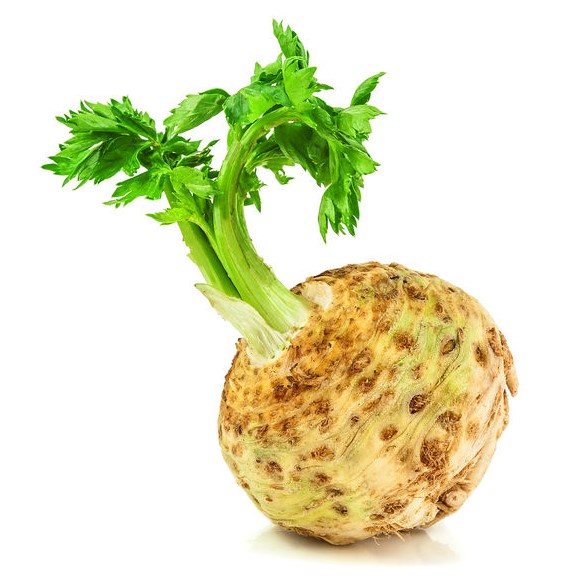
With its knobby exterior and thread like roots emanating from the peel, celeriac is one crazy looking vegetable! Other common names for this bulb are celery root, turnip rooted celery, and knob celery among others.
The name “celery root” is a misleading one though, as this vegetable is not simply the root of those celery sticks that accompany your plate of hot wings. Rather, the celeriac plant is a relative of celery, and the two share a very similar flavor–grassy yet slightly salty and savory. The texture of celery root is quite different though. When cooked, celeriac turns creamy and thick, making it an excellent low-carb substitute for potatoes and other starches.
4. Chayote Squash

Also called a “vegetable pear”, the chayote squash is quite a funny looking thing with its rumpled skin and scrunchy rear end. It is about the same size and shape as a green pear (hence its secondary name), but is actually a member of the gourd family and therefore is more closely related to pumpkins, zucchini, and winter squashes. You may know that such items–including our new friend the chayote!–are actually fruits in botanical terms. However, most squash and gourd species are widely considered to be members of the veggie world due to taste, appearance, and culinary uses.
The exterior rind of the chayote squash is bright spring green, which once cut, reveals a creamy white interior. Both the rind and flesh can be eaten and the flavor is mild enough that the chayote squash can be used in a range of savory dishes. A few popular ways of consuming this funky vegetable are shredded raw and tossed into salads, breaded and fried, or sliced and pickled.
5. Daikon
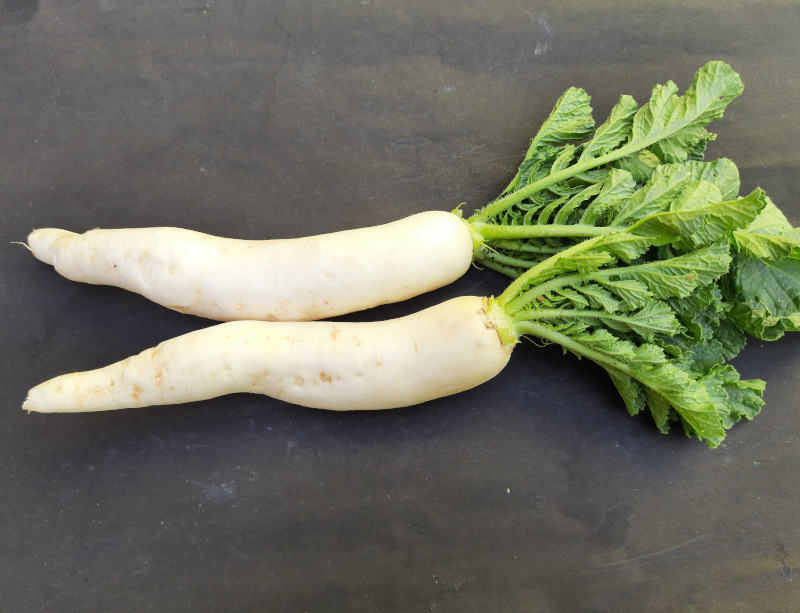
The daikon is a member of the radish family, but rather than the bright red Cherry Belle or French Breakfast radishes you’re likely more familiar with, the daikon has a beautifully smooth ivory skin instead. Like other radishes, daikon is crunchy and refreshing with a flavor that may range from mild to hot and peppery, depending on the radish.
Once found only primarily in Asian cuisines, daikon has made its way to many other dishes and is now a fairly common sight in most grocery stores. The crunchy white root vegetable is delicious when eaten raw and is sturdy enough to stand up to all of your favorite dips!
6. Fiddleheads
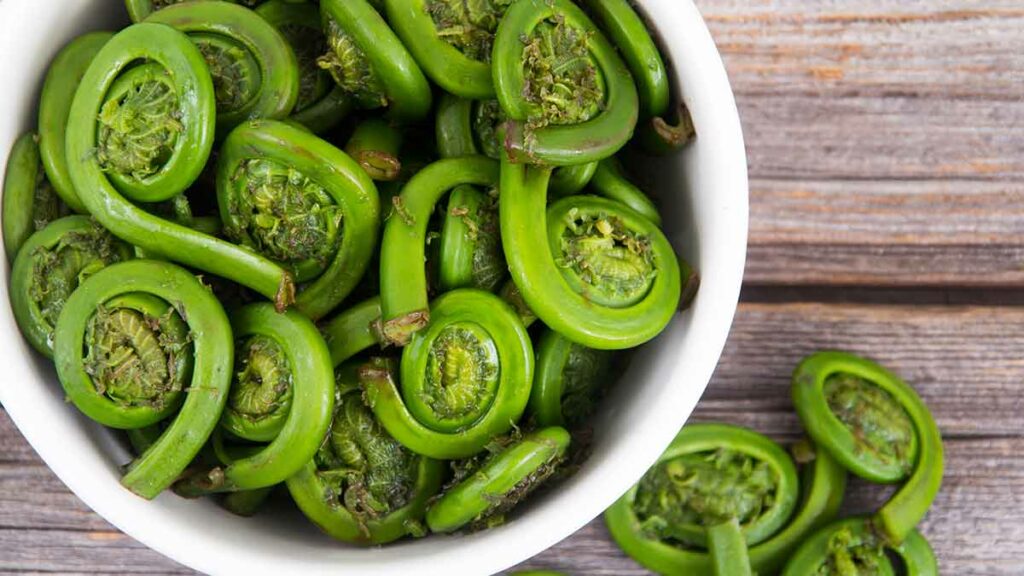
And the prize for the most uniquely named unusual vegetable goes to: fiddleheads! These spiral-like green leaves are actually the shoots of a fern, which have yet to unfurl into their full size. Fiddleheads are a bit fragile and will turn mushy when exposed to prolonged heat, so they are typically cooked quickly so as to maintain their natural crunchy yet soft texture.
Fiddleheads are not cultivated like many other fruits and vegetables, therefore they are most often acquired through foraging, meaning you’ll likely only ever find them in farmer’s markets or small specialty stores.
7. Jerusalem Artichokes
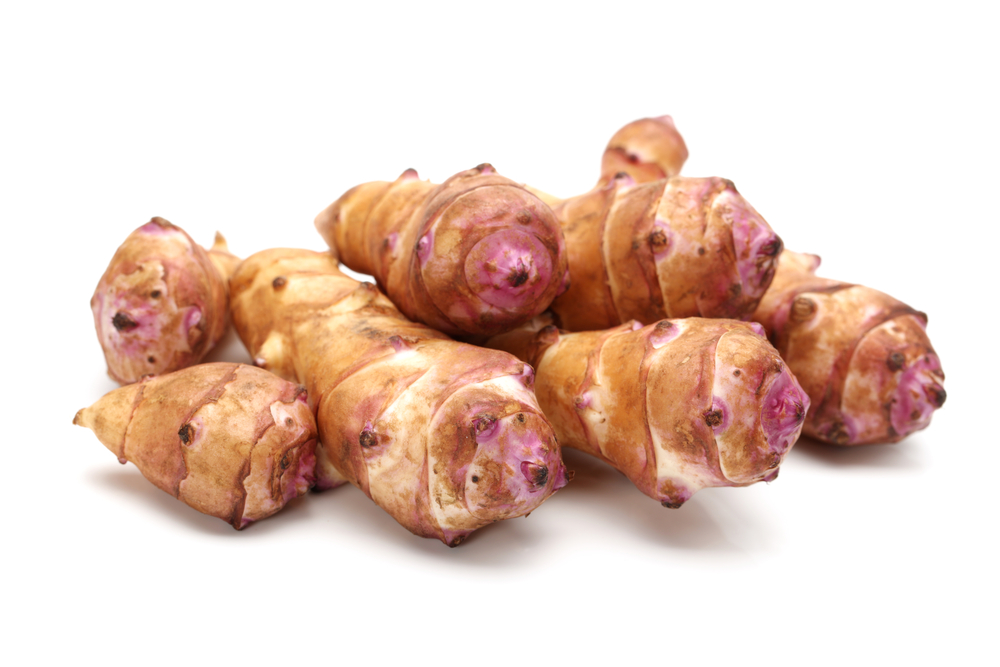
Also known as sunchokes, Jerusalem artichokes are some of the weirdest vegetables you’ll see! They look like a cross between a potato and ginger root, yet have a rich flavor that is all their own.
Interestingly enough, these veggies are the tuber (root) of a specific type of sunflower, offering an explanation as to the origins of their sweet, nutty, slightly floral flavor. Sunchokes can be eaten raw, but most often are cooked and served in any manner similar to that of potatoes, such as pureed with cream and seasonings, roasted and salted, or stirred into soups.
8. Jicama
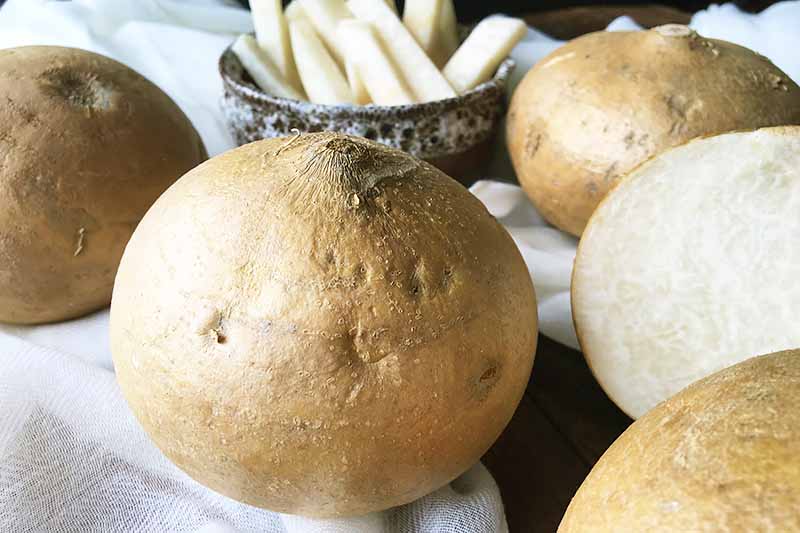
With alternate names such as “Mexican yam bean” and the “Mexican turnip”, it should come as no surprise that the jicama is a staple vegetable of Mexican cooking! This root vegetable has a wonderfully sweet taste, refreshing juiciness, and a crunch that is retained whether the vegetable is served raw or cooked.
You may often see fresh jicama sliced into sticks for snacking served with a side of chili powder and lime for dipping, but it is also plenty delicious when stir fried, roasted, or tossed into salads.
9. Lamb’s Quarters
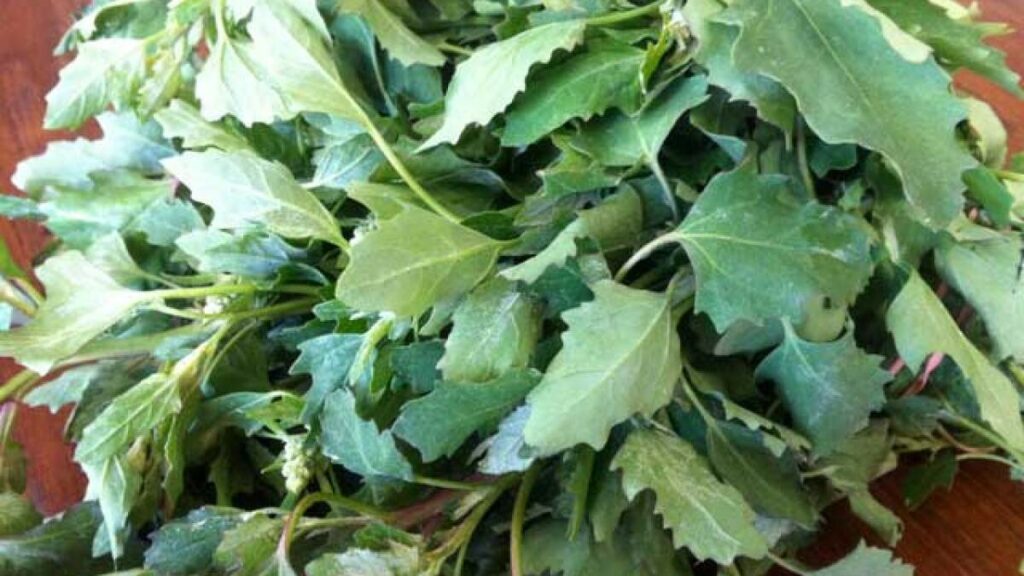
Despite the sheepish name, lamb’s quarters is actually an edible plant of the extremely large amaranth family. Lamb’s quarters grows wildly in a great number of regions of the world and is often regarded as a weed by those who don’t realize they’re looking at a super nutritious wild edible!
With a flavor similar to that of spinach or Swiss chard, this leafy green is delicious when steamed, sautéed in oil, stirred into soups, or blended into green juices and smoothies. The leaves of this plant have a silvery, almost velvety coating which may feel irritating to some people when eaten raw, but cooking the lamb’s quarters easily rectifies this.
10. Lotus Root
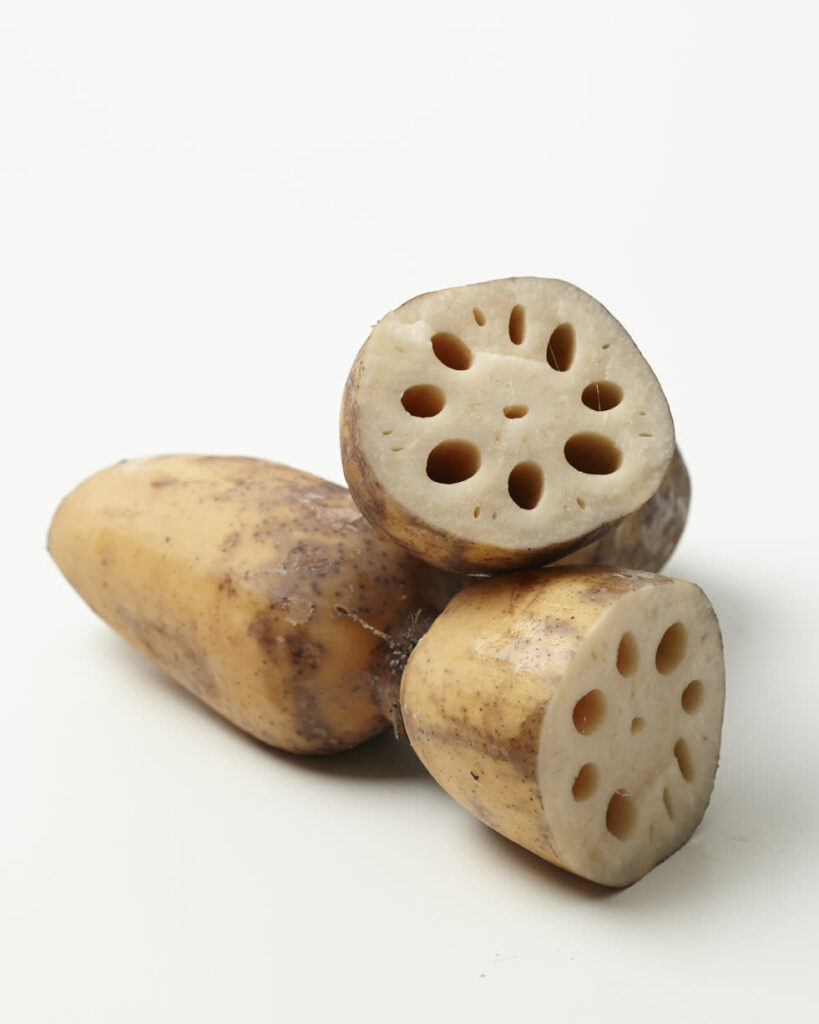
You may have heard of the lotus flower before, or perhaps even seen one, but did you know that hidden all the way at the base of this aquatic plant lies an edible, hidden secret? The tasty root of the lotus plant stays buried in the muddy base of whatever pond or lake the plant happens to be residing in.
Lotus root has a creamy, starchy texture, much like other root vegetables. However, once sliced open, the lotus root reveals a special surprise: a characteristic pattern of holes boring through the tuber, creating a beautiful design that makes this veggie especially appealing when sliced!
11. Nopales
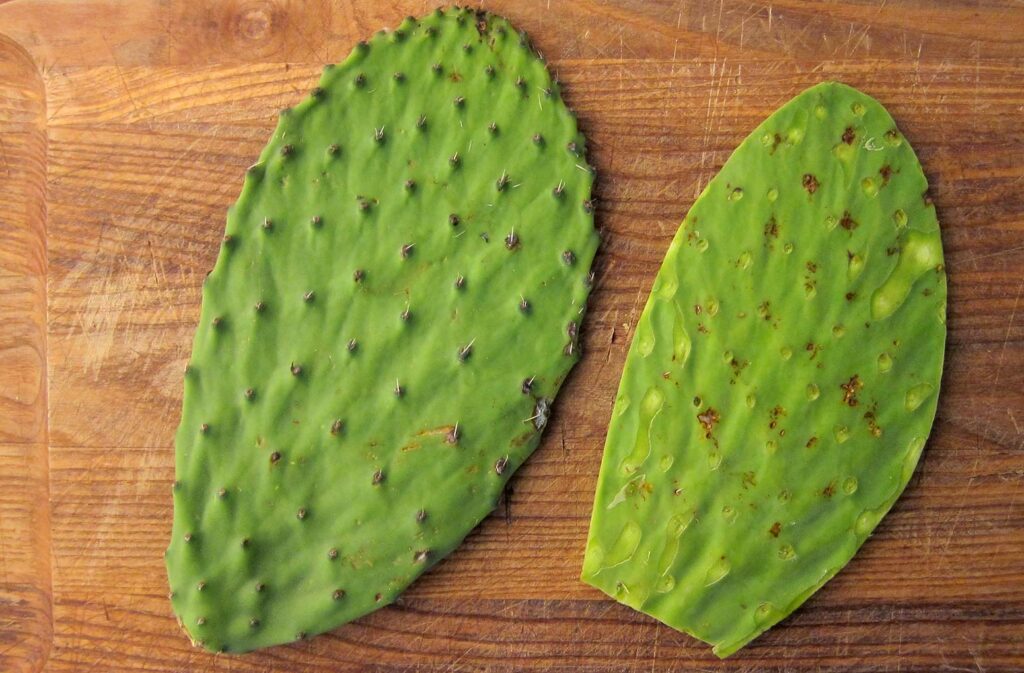
Nopales are the large paddle-shaped pads of a specific cactus species, also known as “opuntia” or “prickly pears”. Their flavor is mildly tart, with a slight note of citrus and a grassiness similar to that of asparagus. The texture is crunchy yet meaty, with a mucilaginous consistency that is similar to okra.
Nopales are a staple food in many Mexican dishes for the fact that they make an excellent side dish or meat replacement in tacos, burritos, enchiladas, and beyond. As a cactus, a covering of spikes and spines on the nopales pads comes with the territory. In order to render these scary looking vegetables edible, the spines must be carefully trimmed off of the surface before the flesh can be chopped or sliced and cooked as desired.
12. Oca
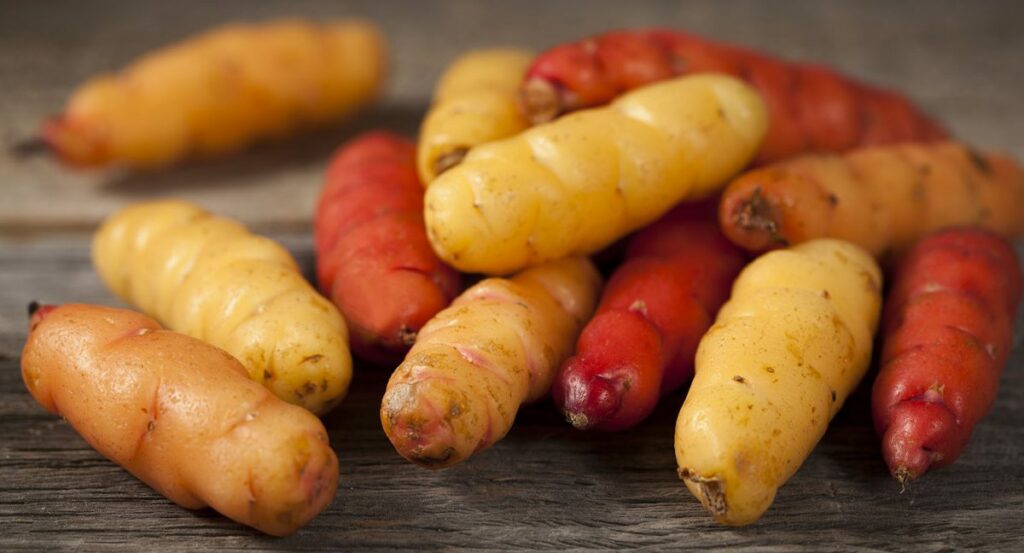
Oca is the edible root of an herbaceous plant in the Oxalidaceae family, making it closely related to wood sorrel and starfruit, among others! The tuber is known for coming in a range of brilliant colors, from bright red or orange to pale yellow or peachy-pink.
Originally cultivated in the Andes region of South America, oca is now used as a starchy vegetable in much of the continent, as well as Central America, Europe, and New Zealand, where they are simply referred to as “yams”.
The flavor and texture of oca is most similar to that of an average potato, sporting a slightly tart flavor when enjoyed raw and turning nutty and savory when cooked. Not surprisingly, these tubers are delicious in many of the same preparations as well: roasted, baked, boiled, or fried!
13. Purple Sweet Potatoes
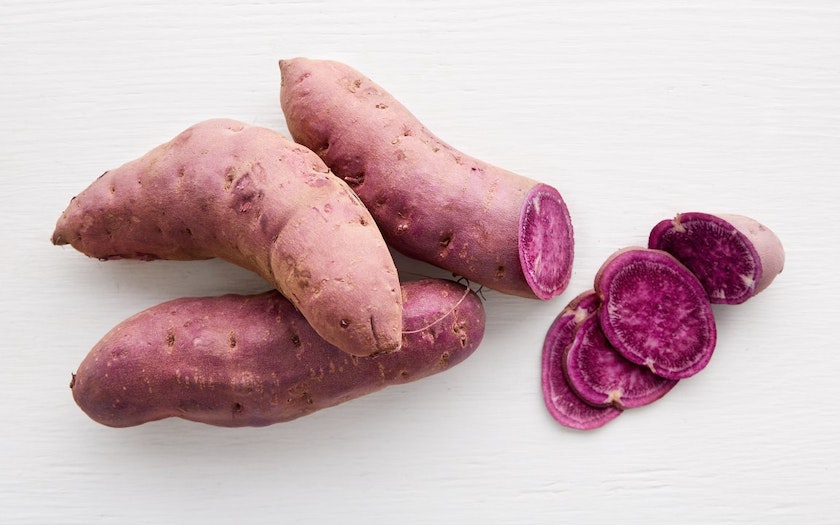
Speaking of potatoes, we have yet another unusual tuber on our list of unique vegetables: the purple sweet potato! There are actually several different types of purple sweet potatoes: Stokes, Okinawan, and Molokai to name a few.
These root vegetables owe their deep violet coloring to the same compounds that color other purple and red hued foods–including red wine–known as anthocyanins. These compounds are known for their antioxidant properties, meaning purple sweet potatoes are extremely good for you. Their taste is similar to that of your standard orange/yellow sweet potatoes, with a bit more sweetness and a slightly drier texture.
14. Ramps
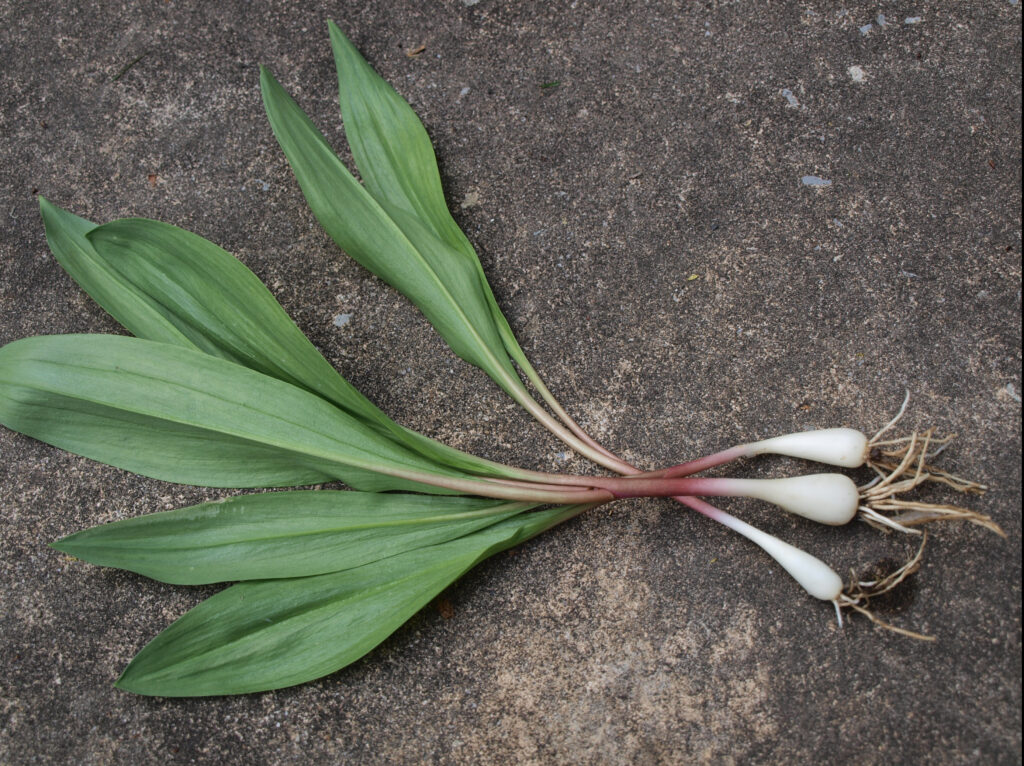
If you’re still confused by ramps, we don’t blame you! This variety of wild onion sure doesn’t make itself clear, as it looks like a scallion up top, yet produces a teardrop shaped bulb at the bottom. The distinguishing feature to look for, however, is 1 to 3 wide, flat green leaves which often blend into a splash of reddish-purple where they meet the root.
One whiff of a ramp and you’ll know what to do with it: use it just like any other member of the onion and garlic family! The flavor of ramps is like a cross between a leek and garlic, making it perfect to slice and toss in a stir fry, roast alongside chicken thighs, or you can even pickle them. The greens are edible as well!
15. Romanesco Broccoli
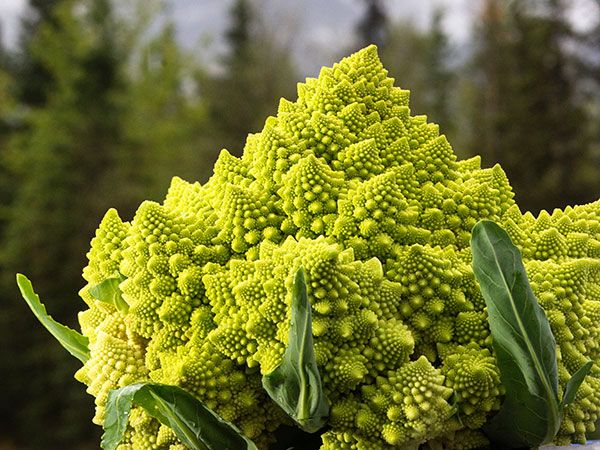
This veggie is often confused with romesco sauce, which is a thick sauce made from tomatoes, roasted red peppers, nuts, and stale bread that hails from Spain. Romanesco broccoli, on the other hand, is a member of the cabbage family and is also known as Roman cauliflower.
You will never mistake this veggie for its broccoli and cauliflower cousins though, as its appearance is uniquely striking! Rather than smooth rounded florets, Romanesco produces cone-shaped clusters that all come together in a single head–resembling a cluster of tiny pale green pine trees! Romanesco also comes in purple and yellow varieties, but the flavor of each of them is about the same–nutty and slightly sweet, just like regular cauliflower.
16. Salsify
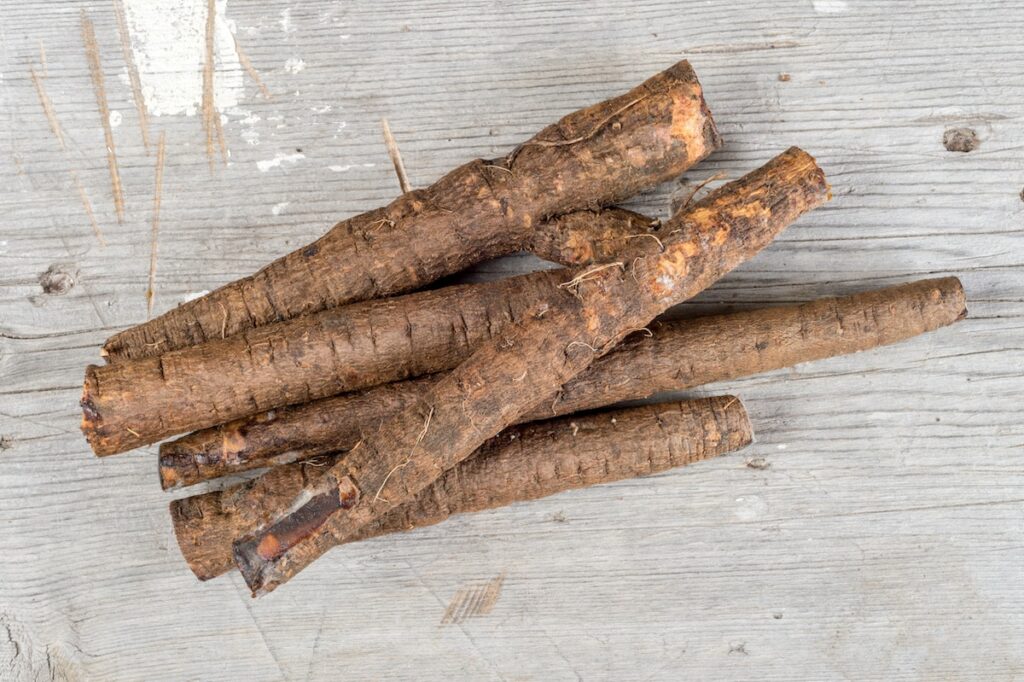
And for one of the weirdest of the weird vegetables out there, enter: salsify! At first glance, this root vegetable looks like nothing more than a pile of sticks. But don’t let this less-than-stellar first impression fool you! Salsify is a relative of the parsnip, as well as is related to the dandelion flower.
Once stripped of its dark, sticky “bark”, the creamy white, edible flesh of the root is revealed. In addition to being an important food source, salsify has long been touted for its many health benefits including blood pressure regulation, digestive system improvement, and even used to be a common treatment for snake bites!
The flavor of salsify is fairly mild, slightly sweet and nutty with a subtle bitter taste when consumed raw. The roots can be eaten raw so long as they are young and tender. Once salsify is larger, it becomes fibrous and can be enjoyed in any number of cooked applications such as boiled or roasted, mashed into puree, or cooked into soups and stews.
17. Sea Beans
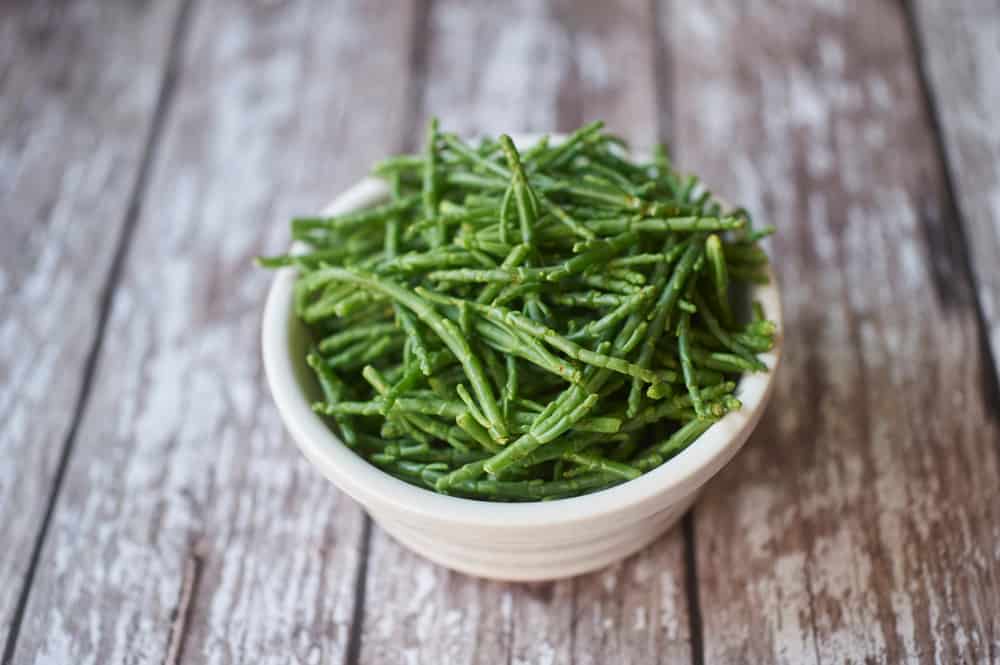
Also known as samphire, glasswort, or sea asparagus, sea beans are not actually beans at all, rather they are native plants to certain coastal areas and marshes. Surprisingly, they are not related to seaweed and they actually grow on beaches and outcroppings as opposed to in the water itself.
As you’d expect from just about anything with the word “sea” in the name, these greens have a naturally salty taste which instantly punches up the flavor profile of any dish. They have a pleasantly crunchy texture which holds nicely to cooking, unlike many other greens which become wilted and soft. Though they can be eaten raw, it’s always a good idea to blanch the sea beans in a pot of fresh boiling water for a few seconds before consuming as this helps to remove some of the excess salt.
18. Snake Beans
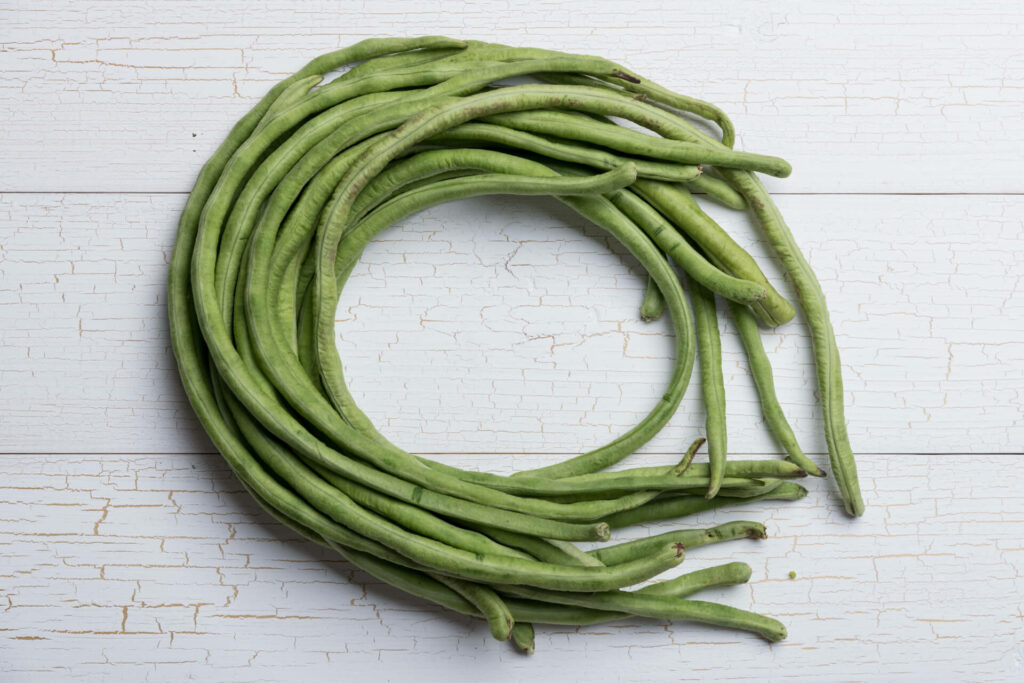
Snake beans may appear to simply be extremely long green beans, but they are actually the long pods produced by a sub-tropical plant that is native to Southeast Asia. They also go by the names of “yardlong beans” and “asparagus beans”, hinting at their impressive size and asparagus-like flavor.
Snake beans are in the same family as other legumes and are most closely related to cowpeas and black eyed peas. Like other beans (and peas!), snake bean pods are actually the fruits of the parent plant, but such fruits have been historically grouped with vegetables–an association which is unlikely to change any time soon.
In case you were wondering, the answer is yes, these beans can reach a yard (3 feet!) in length at times. They can be cooked in the same manner as fresh green beans, whether steamed, boiled, roasted, or added to another dish.
19. Water Spinach
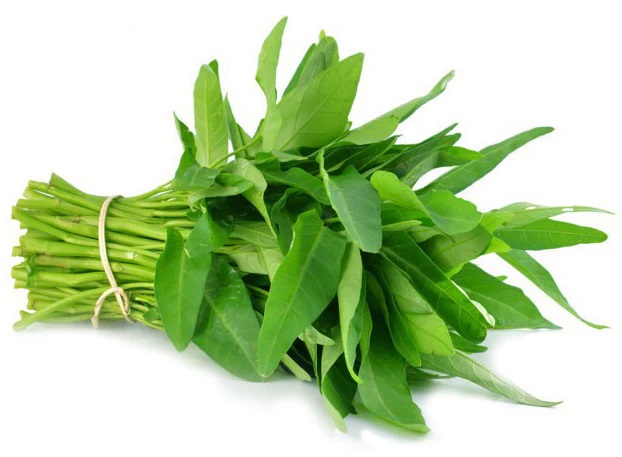
This leafy green is a staple ingredient in Chinese cuisine, making sense of why it is commonly called Chinese water spinach or more simply, Chinese spinach. Despite its name, it is not actually related to regular spinach at all! Rather, it is a member of the morning glory family and produces beautiful flowers that are similarly bell-shaped.
Water spinach is native to Southeast Asia where it grows readily in semi-aquatic areas and is frequently spotted at produce markets where it can be purchased and used to make Asian dishes such as soups, stews, stir fries, and curries or can simply be steamed and served as a side dish.
20. Watermelon Radish
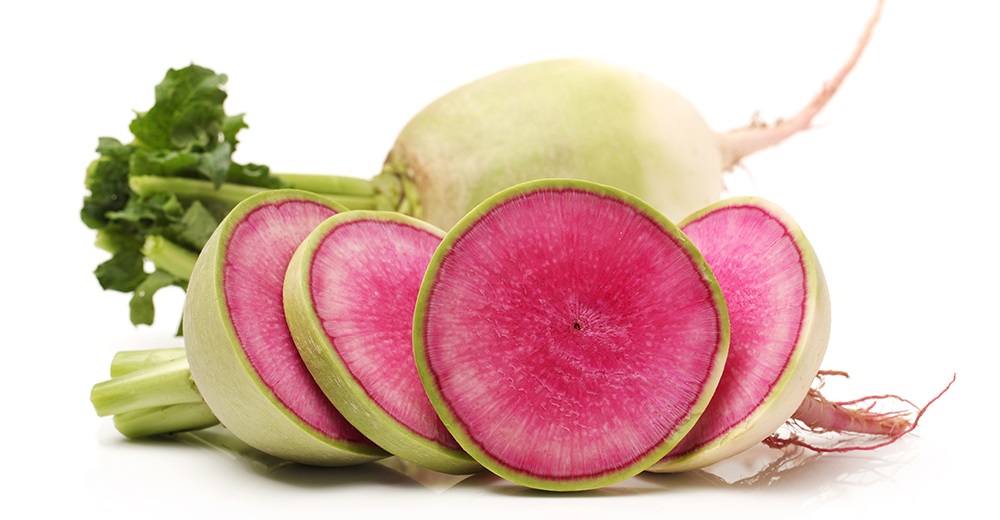
While the watermelon radish is actually a variety of the daikon radish (number 7 on our list of unusual vegetables!), this stunningly colored veggie is so unique, we decided that it deserved a spot all on its own. They may look plain on the outside, sporting a pale green skin, but once sliced open, they reveal a hot pink flesh–giving these root veggies the appearance of tiny watermelons!
Upon tasting them however, you sure won’t be mistaking them for the sweet summer fruit. Watermelon radishes have a crunchy texture when eaten fresh and a slightly spicy taste like that of other members of the radish family. Cooking them will dampen their natural vibrancy a bit so we definitely recommend enjoying these veggies in raw preparations so as to make the most of their beauty!
Final Thoughts on the Top 20 Unusual Vegetables
Though we’ve taken a deep dive on 25 weird vegetables here, the truth is, the exploration of the world of new and unusual food products has only just begun! With hundreds of thousands of known plant species (not all of them edible) on the radar, and new ones being discovered all the time, there is always something new to learn about or to learn more about.
Many times, you can even find some rare and unique produce items in your own grocery store! Next time you’re in the produce department, take a careful look at all of the displays, especially those that contain items from other regions and cuisines. Not sure what something is? Embrace the weirdness by picking it up and giving it a shot! You might just find a new favorite vegetable.
